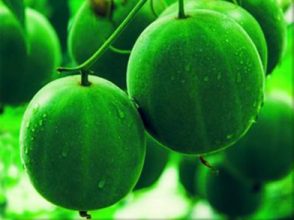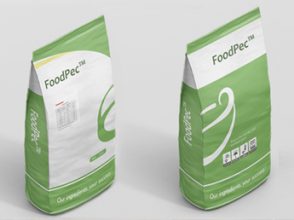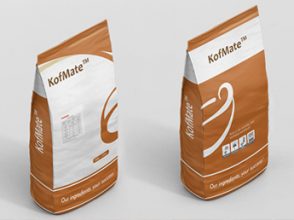【Summary】:
Baked foods are made from flour, yeast, salt, sugar, water, etc., and are added with appropriate amounts of oils, fats, eggs, and other additives, and then processed by dough, molding, baking, and the like.
Baked food raw materials refer to various raw and auxiliary materials such as sugar, fat, flour, butter, jam, chocolate, flavors and yeasts, and yeasts, which are used by baked food manufacturers to make baked goods such as bread, cake, pastry, and traditional Chinese dim sum.

The development of China’s bakery food raw materials industry, the development of the baked food raw materials industry and the bakery food industry complement each other. On the one hand, the two are located upstream and downstream of the same industrial chain.
Baked foods are made from flour, yeast, salt, sugar, water, etc., and are added with appropriate amounts of oils, fats, eggs, and other additives, and then processed by dough, molding, baking, and the like.
Baked food raw materials refer to various raw and auxiliary materials such as sugar, fat, flour, butter, jam, chocolate, flavors and yeasts, and yeasts, which are used by baked food manufacturers to make baked goods such as bread, cake, pastry, and traditional Chinese dim sum.
Overview of the development of China’s bakery food raw materials industry
The development of the bakery food raw materials industry and the bakery food industry complement each other. On the one hand, the two are located in the upstream and downstream of the same industrial chain, and the development of the bakery food raw material industry depends on the bakery food industry.
During the “Twelfth Five-Year Plan” period, China’s food industry continued to maintain stable and healthy growth in the industry on the basis of meeting market demand, transforming growth patterns, and optimizing industrial upgrading. In 2014, the main business income of China’s above-scale food industry enterprises was 10.89 trillion yuan, an increase of 72.58% over the 6.31 trillion yuan in 2010, with a compound growth rate of 14.62%.
The proportion of the total output value of the food industry to the total industrial output value of the country increased from 8.8% in 2010 to 10.0% in 2014, and the food industry’s pillar industry status in the national economy was further enhanced. As an important branch of the food industry, the total output of domestic bakery products in the sugar products industry (including cakes/bread, biscuits, candy chocolate, frozen drinks, instant noodles and preserves) in 2016 was approximately 35.725 million tons, up 9.43% year-on-year; Business income was 738.927 billion yuan, an increase of 8.66% year-on-year.
The main business income of enterprises above designated size in China’s bakery food industry increased from 166.082 billion yuan in 2011 to 265.478 billion yuan in 2015. The proportion of main business income in food manufacturing increased from 11.88% in 2011 to 12.63 in 2015. %; total profit increased from 13.830 billion yuan in 2011 to 23.274 billion yuan in 2015, with a compound annual growth rate of 13.90%.
2011-2015 China’s bakery food industry’s main business income of above-scale enterprises

Baking industry market size
According to statistics from the Prospective Industry Research Institute’s “Baked Food Industry Brand Competition and Consumer Demand Investment Forecast Analysis Report”, the market size of the bakery industry increased from 72.9 billion yuan to 164.8 billion yuan in 2009-2016, and CAGR reached 12.4%. The bread industry also maintained a rapid growth trend. The market size in 2009-2016 increased from 13.1 billion yuan to 28.6 billion yuan, and the CAGR reached 11.8%. The growth rate of the baking industry and the bread industry has slowed since 2015, but we expect to maintain close to 10% growth in the next five years.

Sub-industry pastry, bread making
The pastry and bread manufacturing industry is an important sub-sector of the bakery food manufacturing industry. According to the statistics of the National Bureau of Statistics, the number of entrepreneurs above designated size in the pastry and bread manufacturing industry increased from 430 in 2011 to 703 at the end of October 2015, achieving 63% growth; total assets increased from 27.4 billion in 2011 to At the end of October 2015, it reached 64.9 billion yuan, achieving a growth of 137%.
Number of entrepreneurs in the pastry and bread manufacturing industry, asset size

According to the data of the Prospective Industry Research Institute, the number of enterprises above designated size in the bakery food manufacturing industry increased from 1,036 at the end of 2011 to 1,408 at the end of October 2015, achieving a growth of 36%; the total assets of enterprises above designated size were 83.7 billion yuan at the end of 2011. Increased to 150.4 billion yuan at the end of October 2015, achieving 80% growth.
Entrepreneur number and asset size in the bakery industry

In terms of per capita consumption, China’s baking market has great potential
In 2017, China’s per capita consumption of baked goods was only 6.9 kilograms, far lower than the per capita consumption of developed countries in the West, and also lower than the world average of 18.7 kg/person. Compared with Japan (18.6 kg/person), Hong Kong (12.4 kg/person) and Singapore (10.1 kg/person), China’s per capita consumption still doubles or even triples.
In recent years, as young consumers are affected by foreign eating habits and the pace of urban life is accelerating, the consumption of per capita baked goods in China has maintained a high single-digit growth, from 4 kg/person in 2009 to 6.9 kg in 2017/ People, CAGR reached 7.1%, and the Chinese bakery food industry has huge potential for development.
As China’s per capita disposable income and food consumption expenditures continue to increase, baked food companies continue to optimize and improve in terms of categories, quality, safety, packaging, and taste, to meet the diversified consumer needs of people’s daily diet.






